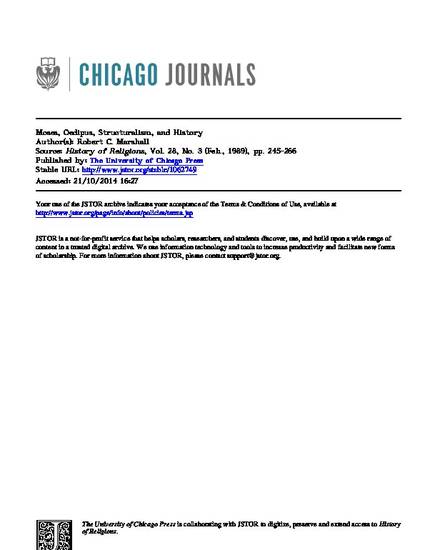
Myths emerge in consciousness as solutions to problems of existence among those who find it worthwhile to reproduce those myths. The many variants that are the myth, appearing as combinations and recombinations of diverse and changing components in an unchanging structure of relationships, are as many possible solutions, more stimuli still for their audiences' imaginations. By the end of the fifth century B.C. for both the Athenians and the Israelites the paramount problem had become the preservation of a form of suzerainty, sociocultural continuity without sovereignty. The myths of Oedipus and Moses converge in their structures at this historical moment on one particular solution to this problem. The answer both give, in the languages and symbols of their respective cultures, is "deliberately and self-consciously preserve and reproduce the culture that bears this myth. Value this culture more than a share in your conqueror's sovereignty." They leave implicit the continuation "If you do so, someday you may be able to regain your own sovereignty." It is my purpose to show by means of parallel analyses of these two myths how they achieve the effect they aim at through the structuring of complex symbols in narrative form.
Available at: http://works.bepress.com/robert_marshall1/1/
